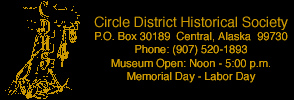
Definitions
Alternate: Only one leaf at a time on a stem opposite or nearly opposite sides of the stem from the next leaf.
Anther: The part of the stamen (male part of the flower) that bears pollen.
Axil: Point of angle where the stem and leaf or leaf stem meet.
Basal: Found at the base.
Bract: A small or modified leaf, often resembling a petal, usually located below the flower.
Capsules: A dry fruit that is composed of more than one seed cavity.
Catkin: A tight spike of a petalless flower.
Caylx: Outermost part of the flower, usually green.
Clasping: Surrounding the stem.
Clawed: Many of the Crowfoot family have a slender, stalk-like portion at the base of the petals and sepals.
Cleft: Split or cut into.
Cluster: A tight bunch or group.
Corm: Vertical, thickened, underground stem.
Compound: Leaves with a single stalk and a number of leaflets.
Dentate: Sharp teeth facing outward on the edges of a leaf.
Disc: Central array of flowers in a composite.
Filament: The stalk part of the stamen (male part of the flower) that supports the anther. The anther and filament together form the stamen.
Floret: A tiny flower, usually part of a bigger, dense cluster, can be used to describe the flower of a grass.
Linear: Line shaped, long and narrow.
Node: A joint where a leaf or branch is attached.
Opposite: Leaves in pairs, opposite each other on the stem.
Ovary: The lower swollen part of the reproductive system that contains the seeds.
Palmate: A leaf divided into lobes that resemble the fingers spreding from the palm of a hand.
Pedicel: The stalk of a single flower within a flower cluster.
Perennial: Living for more than two years, flowering each year usually after the first.
Petiole: The stalk of the leaf.
Pistil: Female part including ovary, style and stigma.
Pinnate: Leaves arranged like the pinnae of a feather, leaflets in pairs on opposite sides of a midrib.
Pinnatifid: Being divided in a pinnate manner.
Ray: The flat outer flowers of a composite or aster flower head like petals of a daisy.
Rhizome: An underground stem or root stock that is curved upward at the end.
Rosette: A crowded cluster of leaves that seem to arise from one point.
Scale: A thin, dry, translucent, not green body or structure.
Sepals: One of the outer groups of flower parts that is most often green.
Sessile: Without a stalk or a stem.
Spike: A flower cluster along the stem.
Spur: An extension of the lip or third petal of a flower found most often in orchids.
Stamen: The male part of the flower containing a filament and an anther that bears pollen.
Styles: A part of the reproductive portion of the plant, tubular in shape.
Symbiotic: A close association between two or more different organisms of different species that may benefit each member.
Taproot: Anchors a plant in unstable soil. A long, thick root growing in dry or rocky areas reaching deep for nutrients and water.
Terminal: At the end.
Tuber: Solid, thick underground stem having buds.
Tuberoids: A thickened fleshy root much like as tuber.
Tufted: Clumped or clustered, having a bunch arising from the same point.
Umbrel: A description of a flower cluster, more or less flat topped, where the stalks arise from a common point, resembling the ribs of an umbrella.
Whorl: An arrangement of leaves, flowers etc., in a circle around the stem.